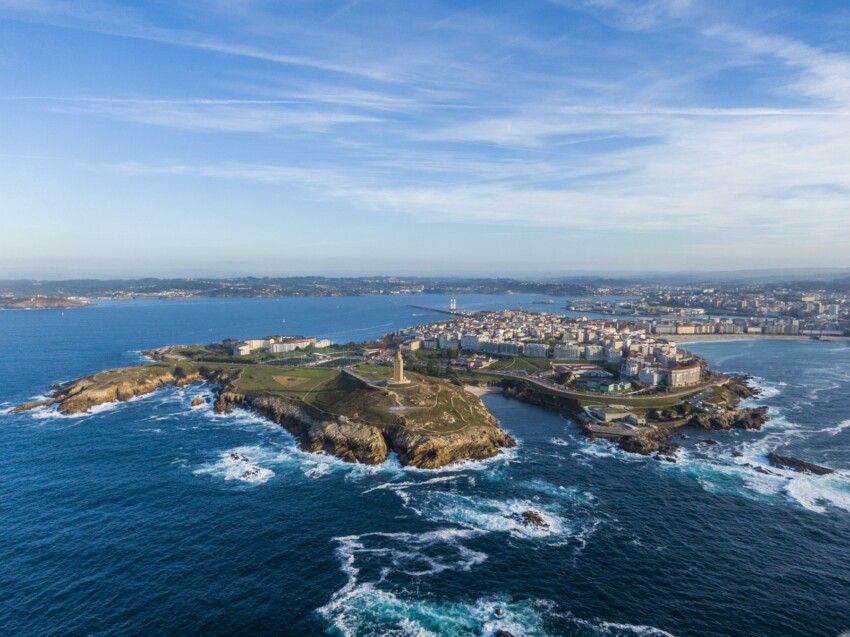

In Galician it’s A Coruña, while in the rest of Europe – perhaps also thanks to the city’s famous football team Deportivo La Coruña – it is known by its Castilian Spanish name, which simply adds an L. Port city, seaside resort, cultural and commercial centre, A Coruña or La Coruña as it is known is an all-inclusive destination suitable for everyone, yet still little known to international tourism.
Abandon the beaten track and overcrowded capitals, come and discover a true pearl of Northern Spain that combines the warmth and imagination typical of this country with the wild romantic atmospheres of Northern European countries.
At first impact, the city will surprise you with the peculiar morphology of its territory, which occupies a rather convoluted part of Galician soil. The historic centre of La Coruña, with its medieval town planning, is enclosed within an isthmus jutting out towards the ocean; on the south-eastern side is the bustling port that has marked the city’s history, while the north-western side is the right direction to encounter magnificent white sandy city beaches nestled between green cliffs. The coastline of the isthmus and surrounding areas is rugged and wild.
Rich in museums, monuments and historical buildings, including the only Roman lighthouse still in operation, La Coruña owes its fame mainly to the delicious fish and seafood dishes of the local gastronomic tradition. The area of la Pescaderia Vella is a true paradise for seafood eaters, with a high concentration of cafés and restaurants. Calle Estrella, on the other hand, is home to the city’s best tapas bars, where you can enjoy typical Spanish snacks in a local version, i.e. almost always fish-based.
In spite of its strong ties to tradition, inextricably marked by its relationship with the sea, La Coruña is extremely modern. Towering high-rise buildings, many of them company and office buildings, stand close to the centre, and the city has equipped itself in recent years with original museums and avant-garde architecture. Many European students choose it as their Erasmus location and university life is very lively, making it an ideal destination for young travellers looking for fun.
La Coruña is also the birthplace of the Zara empire, to which shopaholics can pay tribute by shopping in the chain’s first shop, which opened in 1975.
The list of things to see in La Coruña is enough to fill a weekend or more. Its quaint old town, urban beaches and numerous museums offer visitors a wide range of experiences, while the famous Paseo Marítimo, the longest in Europe, connects the city’s main points of interest in a breathtaking scenic route.
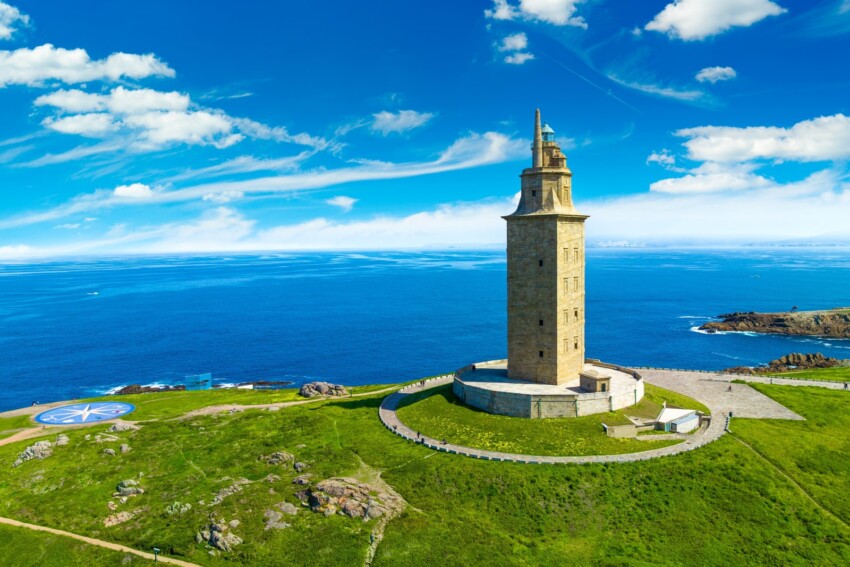
The top attraction in La Coruña, which has become a symbol of the city, is the imposing Tower of Hercules, a lighthouse built by the Romans and still functioning today that will give you an end-of-the-world thrill.
At 59 metres high, it rises solitarily from a vast grassy meadow at the northern end of the city and stands out against the sky, silent and proud witness to centuries of history. You can reach it by walking along the promenade.
The stone exterior walls were added in the late 18th century, but the interior is still original and can be visited. To get to the top you have to climb more than two hundred steep steps, but the view of the city and the ocean you will enjoy is worth more than the effort you will have to make.
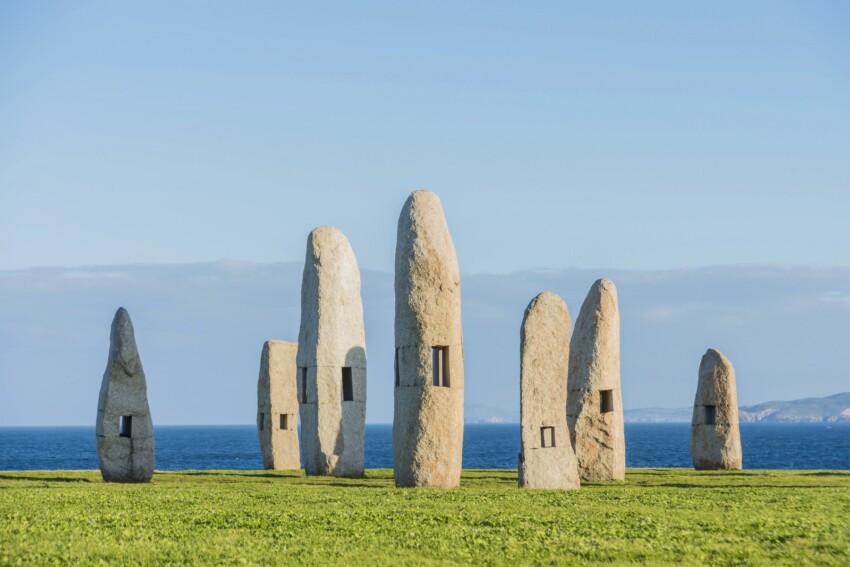
The land surrounding the Tower of Hercules is criss-crossed by a network of paths. It is really pleasant to spend some time without any specific intentions, simply admiring the breathtaking views and letting the wind blow through you. A good spot for taking photographs is the platform with the compass rose at the foot of the tower.
Walking around the lighthouse you can also visit the sculpture park, a kind of open-air museum displaying the original works of 18 Galician artists. Among them, the most interesting are:
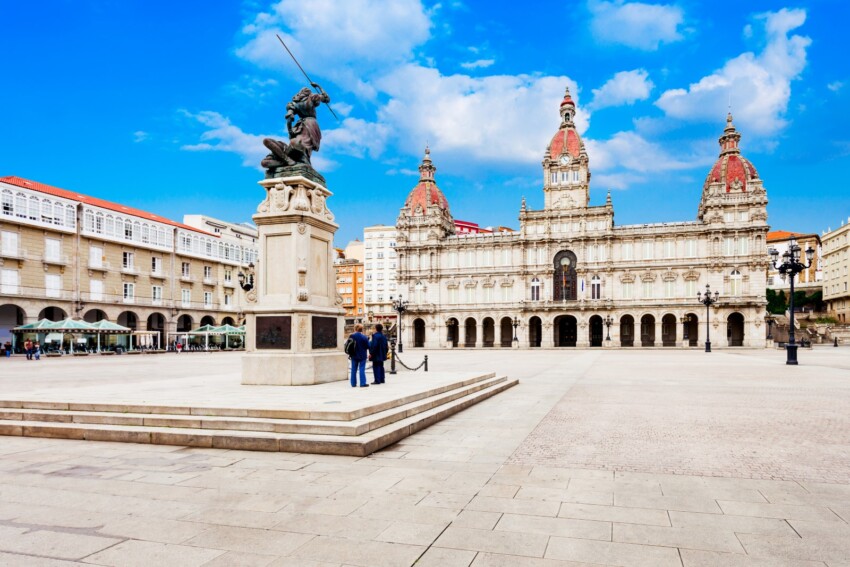
The main town square in La Coruña is dedicated to María Pinta, the heroine who in 1589 led the revolt against the English who wanted to conquer the city.
The nerve centre of city life and a popular meeting place, it is a stately square flanked by elegant buildings, including the modernist-style Casa Consistorial (town hall), and numerous bars with outdoor seating.
For many inhabitants of La Coruña, the promenade IS the city. It is a 13 km-long pedestrian and cycle path that winds from the harbour towards the city beaches and continues westwards following the winding curves of the rugged Galician coastline: it is the beating heart of the city.
Walk the paseo maritimo of La Coruña at your own pace, whether it is a slow walk or a jog, savouring the unique atmosphere of the place that combines breathtaking ocean views with a distinctive urban appeal.
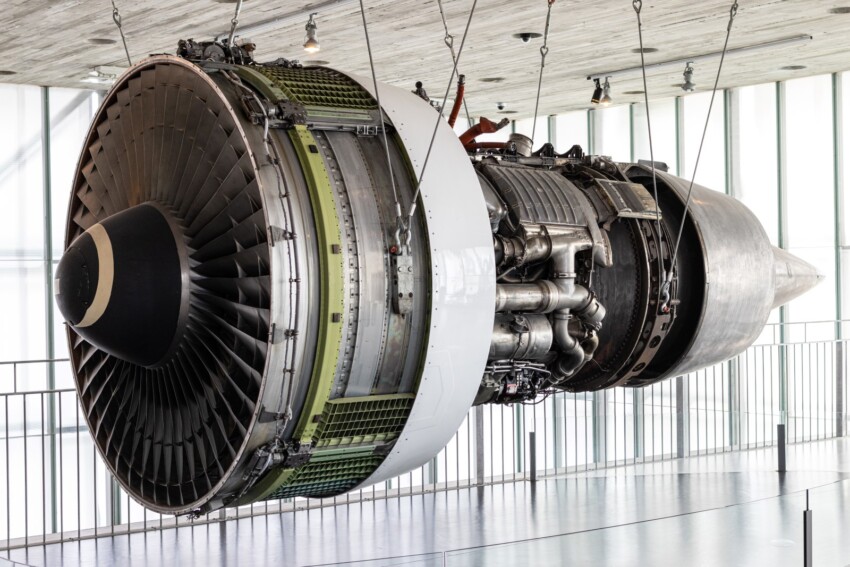
The MUNCYT is La Coruña’s ambitious attempt to have a modern museum that serves as a magnet for tourists, similar to what happened in Bilbao with the Guggenheim.
Although it is still far from being as famous and as visited as the Guggenheim, the National Museum of Science and Technology of La Coruña is an amazing attraction, definitely not to be missed. It is a fun and interactive museum, capable of thrilling nerds and curious people of all ages in equal measure.
The modernist-style exterior building, designed by architects Victoria Acebo and Angel Alonso, is a glass and concrete masterpiece near the city’s main beach, with gleaming walls that sparkle in the sunlight.
The highlights of the museum collection are a giant IBM computer from 1959 and the front section of a Boeing 747. An entire section is dedicated to the innovations of the 20th century: inventions from every year of the entire century are on display, a decidedly comprehensive collection, with curious pieces such as a pencil sharpener from 1946 or those that have profoundly marked the evolution of Spanish society, such as the Seat 600 car.
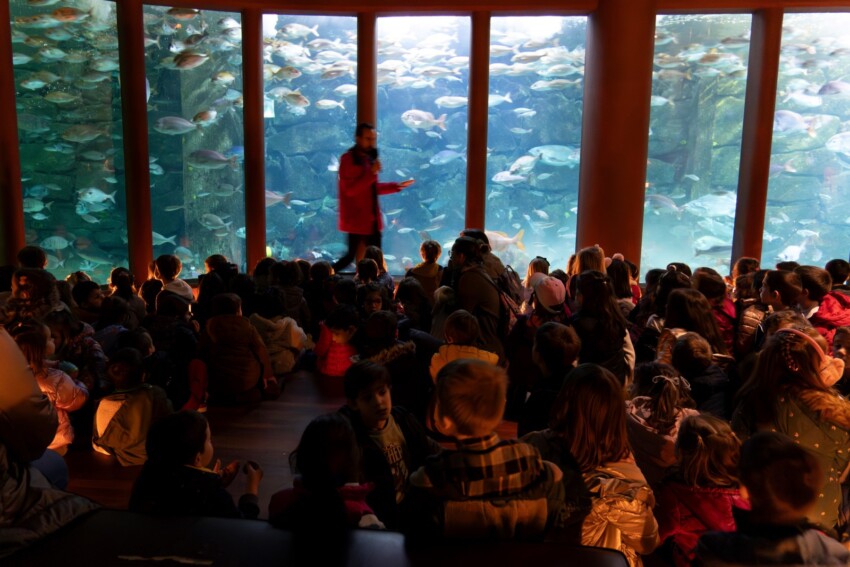
The Aquarium Finisterrae in La Coruña is one of the most important in Spain and is the ideal attraction for a few hours of family fun or to find shelter from the unfortunately frequent rains that hit Galicia.
Without getting even a drop wet, you can see sharks, seals and more than 50 species of fish swimming around, reflecting the marine environment of the Atlantic, with a focus on species typical of Galician waters. Don’t miss the Nautilis Hall, inspired by Jules Verne’s famous novel ‘Twenty Thousand Leagues Under the Sea’.
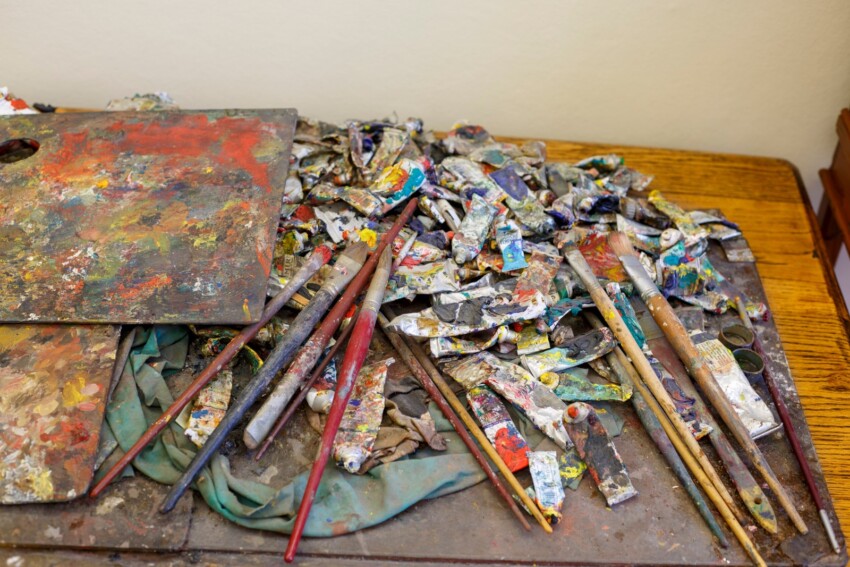
What does Pablo Picasso have to do with La Coruña? The brilliant Spanish painter lived in this city from the age of 9 to 13 and his house has become a museum open to the public.
The structure of the flat has remained intact, and the interior has been furnished with period furniture. On display are copies of drawings and paintings that the very young Picasso made during the years he lived in La Coruña, from which his extraordinary talent already emerges.
To discover Picasso’s places in La Coruña you can follow the themed itinerary created by the local tourist office.
In addition to the house, you can see the square where the school he attended and where he used to play (plaza de Pontevedra), the city beach immortalised in his works (praia de Riazor), the cemetery where his sister was buried (Santo Amaro cemetery), the art school where his father taught and the Tower of Hercules, a place from which the young artist drew profound inspiration.
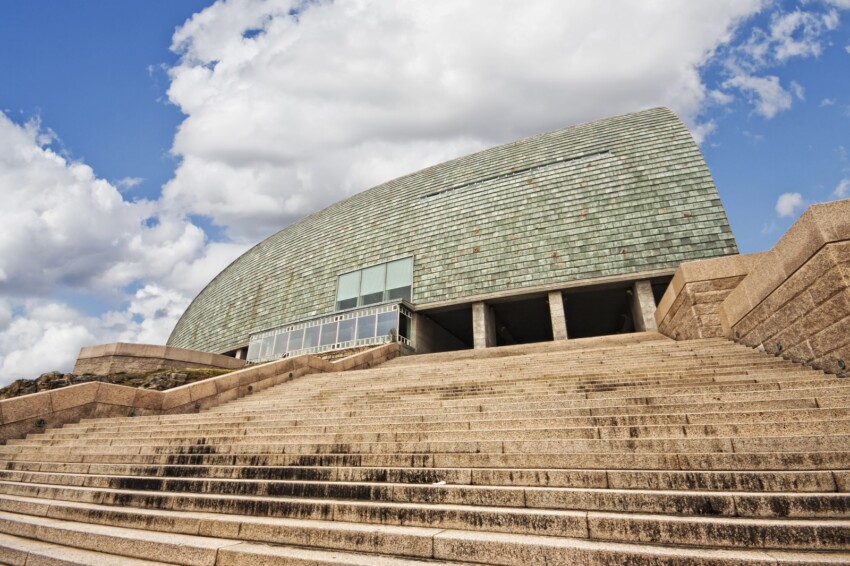
One of the most original museums in La Coruña is Domus (Casa del Hombre), a physiology museum housed inside a futuristic ship-shaped building by Japanese architect Arata Isozaki.
The exhibition includes 150 interactive modules designed to make people think about the characteristics of the human species: topics include biology, genetic engineering, evolution and the very recent personalised medicine developed from new knowledge about DNA.
Panoramic views are the pride of La Coruña: one of the most beautiful can be enjoyed from the top of Monte de San Pedro, a hillock about 2 km from the city centre. Perhaps what makes it so popular is the lift that goes up from the Paseo Maritimo and allows you to reach the top without any effort.
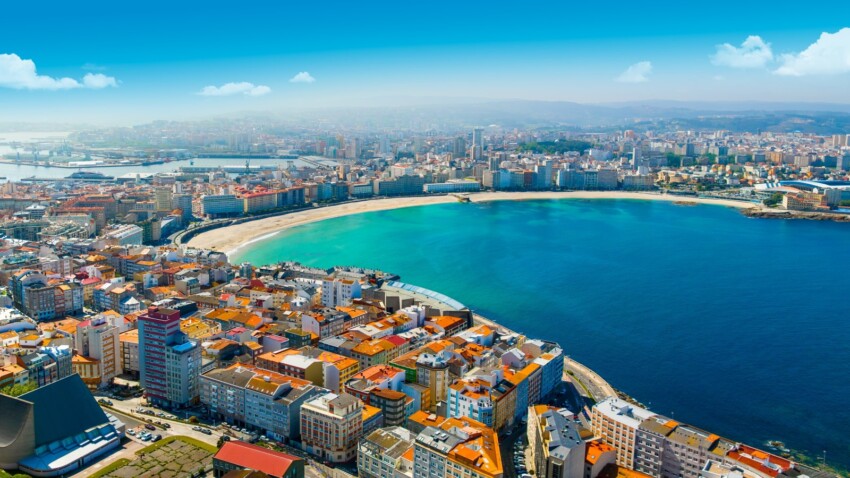
The most popular beach in La Coruña is Praia de Riazor10, easily reached by walking along the promenade from the city centre. Lying in the sun on this pretty city beach, your gaze will sweep from the modern buildings that line the street parallel to the beaches to the peninsula of the city centre and the blue waters of the ocean.
To the east of Praia de Riazor stretches Praia de Orzán11, a 600-metre-long sandy beach that is also very popular. If you prefer solitary beaches, head to Praia das Lapas12, nestled in a remote bay between the Tower of Hercules and the aquarium.
In the following map you can see the location of the main places of interest mentioned in this article.
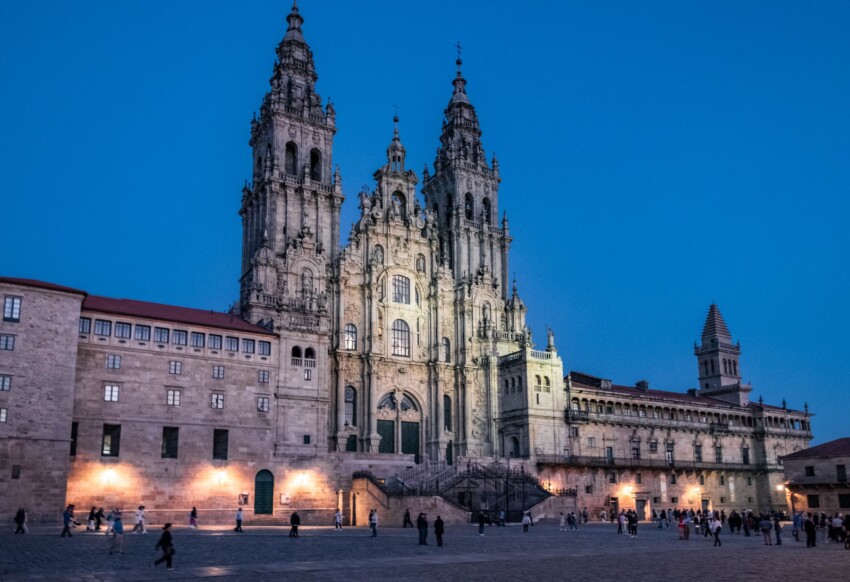
Galicia offers numerous possibilities for day trips from La Coruña, with landscapes ranging from the wild coastline to the green hills of the interior. Renting a car is recommended to better explore the region and to reach the most attractive locations not served by public transport.
The capital of Galicia and final destination of the Camino de Santiago is located only 65 km from La Coruña. The historic centre of Santiago de Compostela, a UNESCO World Heritage site, is one of the most beautiful in Europe, with the majestic cathedral as its focal point. The city offers a unique atmosphere with its medieval squares, stone arcades and lively student life. Don’t miss the Pilgrim’s Mass with the famous botafumeiro.
The wild Costa da Morte, which stretches west of La Coruña, owes its name to the many shipwrecks that have occurred along its rocky shores. This area offers some of the most spectacular landscapes in Galicia, with historic lighthouses, deserted beaches and small fishing villages. Places like Fisterra, considered by the ancient Romans to be the end of the known world, and Muxía with its sanctuary by the sea, are must-see destinations.
The stretch of coastline stretching from the Tower of Hércules northwards, known as the Costa Artabra, offers breathtaking views and hidden beaches. The area is ideal for nature excursions, with well-marked coastal paths leading to secluded coves and spectacular viewpoints.
La Coruña is a culturally vibrant city, with shows and events throughout the year in addition to the popular fiestas that are still enjoyed by the citizens with enthusiasm and participation.
The night between 23 and 24 June is one of the best dates to visit La Coruña: it is the night of the Bonfire of Saint John (Hogueras de San Juan), during which families and groups of friends gather for lively sardine barbecues accompanied by potatoes cooked in their skins called cachelos. Throughout the night, numerous bonfires are lit on the beach and in the neighbourhoods to ward off evil spirits. The party atmosphere is contagious, but if you want to participate, remember to book your hotel well in advance.
The month of August, on the other hand, is entirely dedicated to the town heroine Maria Pita, celebrated with a packed calendar of events that includes book and craft fairs, naval battles, fair competitions, sports competitions, bullfights, concerts, theatre performances and more.
Classical music lovers are advised to visit La Coruña in spring or autumn, when the Mozart Festival (May/June) and the Opera Festival (September/October) are held in the city. April, on the other hand, is a month dedicated to ethnic music with the exciting Music with Roots Festival.
Compared to other Spanish cities, accommodation in La Coruña may be less attractive but is on average less expensive, without losing cleanliness and comfort.
There are many unpretentious hotels and private rooms, perfect for low-cost travellers, but there is also a wide choice of 3- and 4-star hotels for those who want more comfort, including some international chain hotels.
The centre is the best area to stay, a stone’s throw from the beaches and main tourist attractions and full of places to eat and spend the evening. Not far from the centre Monte Alto is a young neighbourhood, inhabited by many Erasmus students and full of trendy bars and clubs.
There is an airport in La Coruña, which is only served by domestic flights and a few low-cost flights to London, so there are no direct flights.
Nevertheless, getting to La Coruña is easy: just fly to Santiago de Compostela, which is only 70 km away. The two cities are connected by direct trains and buses. Depending on the means of transport chosen, the journey time can vary from 30 minutes to an hour and a half.
If you cannot find a flight to Santiago leaving from an airport near you, look for one to Madrid: the choice of flights, even cheap ones, is much greater, and even in this case you can get to La Coruña by bus or train but the journey time will be at least six hours (up to 11 with the slowest trains). Much better in this case to rent a car, a choice that also allows you to explore the beautiful landscapes around La Coruña and drive along coastal roads with breathtaking views. Moreover, before entering Galicia, you will pass close to the cities of Segovia, Leon and Valladolid: ideal for breaking up the trip!
If you are already in Spain, you can reach La Coruña by train and bus from all major locations in Galicia and the north of the country.
What's the weather at La Coruña? Below are the temperatures and the weather forecast at La Coruña for the next few days.
La Coruna is located in Galicia. Overlooking the Atlantic Ocean, it is less than an hour's motorway ride from Santiago de Compostela.